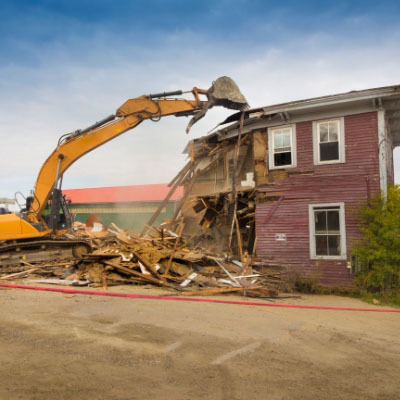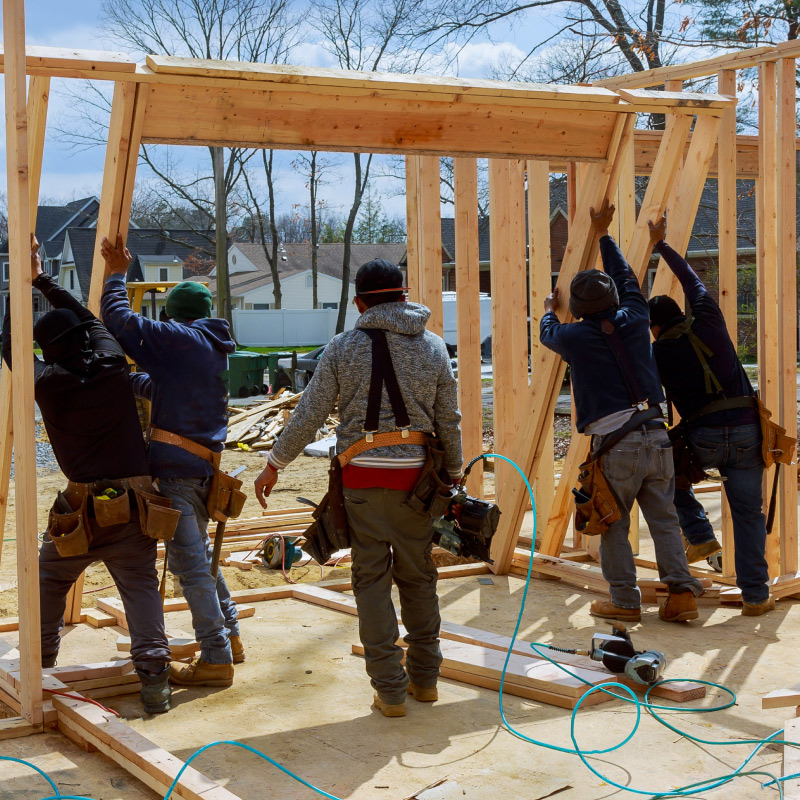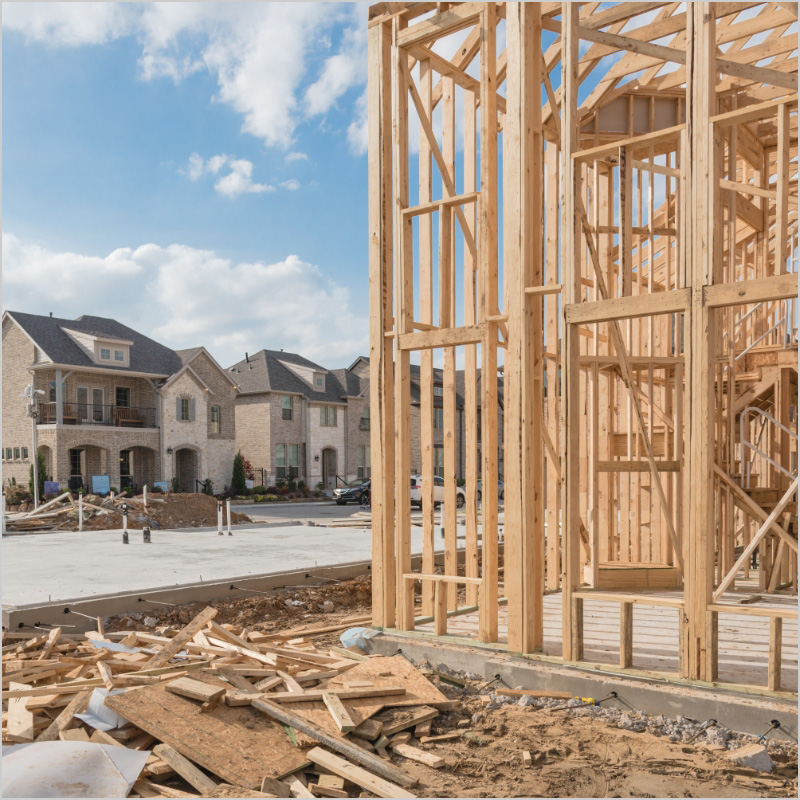How to Estimate Construction Costs

Published February 8, 2024
Estimating construction costs is a method of budgeting a project, determining its feasibility and calculating a bid or budget. Construction estimates provide guidelines for further project planning, resource management, scheduling and incidental changes. Consider all the building costs necessary to complete a new project and calculate the best price you can offer your potential client.
This guide covers how to estimate construction costs at each stage of project development, including the cost of materials, labor, equipment and contingencies.
Difficulty:
Advanced
Duration:
Over 1 day
Table of Contents
Construction Project Scope and Types of Cost Estimates
Creating Construction Cost Estimates
Estimating Construction Costs for Bids
Construction Cost Estimate Updates, Contingencies and Variances
More Tools. More Products. More Perks.
Construction Project Scope and Types of Cost Estimates

Before starting the cost estimation process, it is important to clarify the project’s scope or order of magnitude. Identify the materials necessary to finish the project. Read all the planning materials such as architectural plans, engineering diagrams and project specifications.
When meeting with your client, define the order of magnitude of the project by assessing their expectations, the function of the project, and its complexity. Work with your client to clearly define each aspect of the project so that your estimations are accurate to their vision. Ask them for the following details:
- Purpose of the project and whether it is residential, commercial or industrial
- Size and layout of the finished building
- Complexity and number of unique features
- Site location and any potential environmental or regulatory considerations
Specific design requirements are usually finalized by the project owner and their contracted architect. The architect typically selects other specialists knowledgeable in the type of project to form a design team.
More complex projects with stipulations like acoustic requirements and HAZMAT storage tend to have have larger design teams and thus more people to consult with when making an estimation. The architect is typically responsible for supervising the design process but some larger projects may also be reviewed by an engineer.
As the project continues, the head architect will refine the project’s designs until it meets all the client’s desires and requirements. The architect will start with the broad strokes, and then work closely with the design team to find the right way to approach the details. Finally, the architect and project owner will produce construction documents from which estimators can provide and revise cost estimates for the final version of the project.
Cost estimates vary depending on the level of detail required and the current phase of the design process. Types of construction cost estimates include:
- Preliminary: At the start of the process this estimate purely serves as a rough idea of the cost based on limited information. This rough, initial estimate is based on early project information such as a proposal or abstract.
- Plinth Area: This estimation uses the external dimensions of the structure and includes foundation type, roof construction, building materials and finishes.
- Cube Rate: This is based on the total volume of the structure and is typically used when estimating multistory buildings.
- Elemental: This estimates the total cost of structural frames, floor finishes, and other design elements gleaned from drawings and specifications. It is more accurate than a cube rate estimate.
- Detailed Estimate: This thorough and comprehensive estimate is based on a full list of design elements, specifications, necessary materials and labor.
Pro Tip: Keep records of each type of estimate you make for each project and use them as data for future estimations.
Creating Construction Cost Estimates

After you and your client agree on the scope and design of the project, you can begin estimating construction costs for each aspect. Break the project down into smaller phases according to the project schedule and goals. Each phase of your project will have its own costs you can estimate as you continue making plans.
Construction jobs can be broken down into different phases depending on the type of job. Most jobs will have some or all of the following phases:
- Site preparation
- Foundation
- Superstructure
- Interior finishing
- Landscaping
The costs associated with the phases of your project will often differ, which makes it important to break down each phase into cost categories. Construction costs across all phases can be divided into the following categories:
- Direct costs including materials, equipment and labor
- Other labor costs beyond wages, such as taxes and overtime
- Indirect costs such as utilities, legal fees, permits, administrative costs and labor associated with creating bids
- Costs of hiring subcontractors for some or all phases of construction
Create an initial estimate for each phase of the project using the above categories as a guideline. When making these estimates for materials and labor, they are called quantity takeoffs. Quantity takeoffs are based on research for the prices for construction materials, and are used as a starting point for creating more detailed estimates in the future.
The market for different construction materials may change as the project continues. Read The Forecast to stay up to date on the current rates for construction materials so your estimate remains accurate.
Labor cost estimates require research on the current local wages for the type of project you are planning. Start with the average construction wage in your area, then look for the average rates for necessary workers at each phase of the project. Once you have a clear understanding of the competitive rates, repeat this process for any skilled labor or specialized trades your project requires.
Once you understand how much each type of work costs, account for incidental factors such as labor productivity, overtime and labor market conditions. If there is a labor shortage in your area or you have a relatively small staff compared to your project scope, consider attracting workers with a higher wage.
Equipment costs depend on the scale and complexity of the project. Estimate the rental, ownership and maintenance costs for the duration of the project. Consider the costs of all tools, heavy machinery and temporary equipment necessary to finish each phase.
Larger or more detailed architectural projects may require specialized machinery. Get the equipment you need for one-time projects with Home Depot Rentals.
Estimating Construction Costs for Bids

When estimating construction costs for a project bid, use all data about the project provided by the client to create your own estimates. Construction documents may include preliminary design estimates and quantity takeoffs based your client’s expectations. For example, you may be provided a list of construction materials to help you create your own quantity takeoffs.
Potential clients want to select the bid with the lowest total cost while maintaining the quality of their project. You have better chances of having your bid accepted if you can meet their quality standards and provide a competitively low construction cost estimate.
Use your data from past bids that were accepted by your clients. They can provide a rough range of prices that might be competitively viable for your project. Take market conditions from your past bids into account. Depending on the labor market condition and material prices, your past bids may not be comparable even if they are similar in other regards.
Be prepared to keep making estimates even after a bid is accepted. Estimates after the contract is signed are called control estimates and allow for planning ahead as construction conditions change. For example, a control estimate for building materials can anticipate changes in material costs as the project goes on. This aspect of project management can allow the project to stay on schedule and within budget.
Remember to keep records of your costs associated with creating a bid. This includes labor hours for research, estimation software costs and any additional resources you provide to the potential client. If your bid gets rejected, you will need to recuperate these costs in future projects. These costs may reflect in overhead or operational costs for later contracts.
Construction Cost Estimate Updates, Contingencies and Variances

Unexpected challenges and changes are commonplace in construction projects, so it’s crucial to incorporate contingencies and variances into your estimates and bids.
Set aside about 5-10% of your total estimated project cost as your contingency allowance. This will help you cover changes in schedule, costs and project scope. For example, if inclement weather pushes your construction schedule back, a contingency allowance will keep the project profitable even with the lost time.
In addition to contingency plans, estimate updates are important for keeping track of changes as they happen. When you review the cost of contingencies at the end of the project, you will be able to compare it to your initial contingency allowance and update your final profit margin accordingly.
Mark down any changes in scope, schedule, material and labor prices or incidental costs. These also include any equipment replacements or rental extensions you may need as the project continues.
Sometimes, the project owner will update the project’s design during construction. This could be a result of an unexpected change or a last-minute decision as the project goes from one phase to the next. Note the date these changes happen and update your estimates to reflect the new needs for the project.
When updating cost estimates, either for general project control or in unforeseen circumstances, consider the following factors:
- Contingency budget
- Escalation
- Bonds
- Variances
Escalation is the natural inflation of material and labor costs over time and is important to consider for long-term projects. Some project contracts include escalation clauses that contain agreements on how to accommodate this inflation as the project moves forward. If you are working without an escalation clause, continue pricing research as you would for a control estimate and remember that you will spend more on materials than before.
Project owners typically require contractors to arrange for a performance bond in the favor of the owner. This type of bond acts as a guarantee of delivery and stipulates compensation in the event the contractor cannot complete the project according to the terms of the contract. Communicate with the project owner as changes in circumstances and project design occur to find out how they interact with your performance bond.
Some project changes allow the costs to remain roughly within the original scope and estimates. Minor variances can be logged and factored in at the end of the project, but some may require a change order from the client so you can update your budget and estimates before continuing. Avoid complications with your contractual agreements and schedule by agreeing on a variance threshold with your client at the start of the project.
Construction project variance can include:
- Wage increases
- Natural or seasonal events such as snow or heavy rainfall
- Regulatory or legal issues such as additional permitting requirements
Pro Tip: Collaborate with your client to clearly define what will constitute a change order for your project. You will be able to protect your budget and provide them with accurate updates more easily.
More Tools. More Products. More Perks.

Be more competitive and boost your bottom line with Pro Xtra, The Home Depot’s free loyalty program built for Pros. Sign up today to access the enhanced Pro Online Experience, built with the online business tools and time-saving features Pros need.
Save more on must-have supplies you need for the job, like drywall, fencing or roofing. Pro Xtra members qualify for bulk pricing on 4,000+ eligible products every day.



























